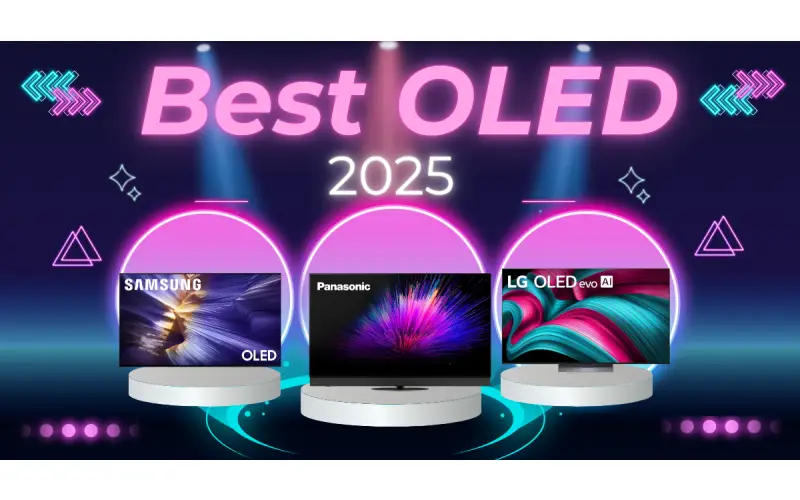By: Dipin Sehdev
The landscape of the global display industry is undergoing a significant transformation, marked by strategic shifts and the rise of new power players. In a move signaling the end of an era for South Korean LCD TV panel manufacturing, LG Display has officially finalized the sale of its last remaining LCD TV panel factory, located in Guangzhou, China, to TCL CSOT (China Star Optoelectronics Technology), a subsidiary of China's electronics giant, TCL. This landmark transaction, valued at approximately 10.8 billion yuan ($1.47 billion USD), underscores the increasing dominance of Chinese manufacturers in the LCD market while simultaneously paving the way for LG Display to intensify its focus on the cutting-edge OLED technology.
This strategic divestiture by LG Display, following Samsung Display's exit from LCD TV panel production in June 2022, highlights the intense competition and evolving dynamics within the display sector. For consumers, this means a notable shift in the supply chain for LCD televisions, including models marketed by industry giants like LG and Samsung under their 'QLED' and 'QNED' banners. These premium LCD TVs will now primarily incorporate panels sourced from Chinese manufacturers, including TCL itself.
TCL's Ascending Trajectory: A Force to Be Reckoned With
The acquisition of LG Display's Guangzhou facility is a significant milestone for TCL, further solidifying its position as one of the fastest-growing display and television manufacturers globally. This strategic expansion significantly boosts TCL's production capabilities and market share in the large-size LCD panel segment.
According to a press release from TCL, the transaction approvals and commercial registration procedures for the shares of LG Display's Guangzhou panel factory (CA corporation) and module factory (GZ corporation) have been successfully completed. This acquisition adds a crucial 8.5-generation LCD production line to TCL's already extensive manufacturing footprint. TCL CSOT has announced that the newly acquired factory will be renamed 'T11' and is poised to commence full-scale production immediately.
This latest addition elevates TCL's operational capacity to an impressive portfolio of display manufacturing lines, including two 6-generation lines, four 8.5-generation lines, one 8.6-generation line, and two advanced 10.5-generation lines. Industry analysis from TrendForce indicates the immediate impact of this acquisition on TCL's market share. By production area for large-size LCD panels, TCL's share has surged from 19.3% to a commanding 22.9%. This remarkable growth trajectory underscores TCL's strategic investments and its aggressive pursuit of market leadership in the display industry.
The Rise of Chinese Display Manufacturing
The sale of LG Display's final LCD TV panel factory marks a pivotal moment in the global display market. Chinese manufacturers, including industry behemoths like BOE, TCL CSOT, and HKC, now collectively control over 70% of the global LCD production capacity. This represents a significant increase from the 65% share held in the previous year, demonstrating the rapid advancements and expanding influence of the Chinese display industry.
This dominance is a result of substantial investments in state-of-the-art manufacturing facilities and a strategic focus on scaling production to meet the ever-increasing global demand for LCD panels across various applications, from televisions to monitors and mobile devices. The economies of scale achieved by these Chinese manufacturers have enabled them to become highly competitive in the global market.
LG Display's Strategic Pivot Towards OLED Innovation
While the sale signifies LG Display's exit from LCD TV panel manufacturing, it's crucial to understand that this move is a strategic realignment rather than a retreat from the display industry altogether. LG Display remains a significant player, particularly in the advanced OLED (Organic Light Emitting Diode) sector. The proceeds from the sale of the Guangzhou factory, estimated at around 2.3 trillion Korean Won (approximately $1.7 billion USD), will be strategically reinvested to accelerate LG Display's OLED business.
OLED technology represents the pinnacle of display innovation, offering superior picture quality with perfect blacks, vibrant colors, and exceptional contrast ratios. LG Display has been a pioneer in OLED technology and continues to be a leading force in its development and application across various product categories, including premium televisions, flexible displays for smartphones, and automotive displays.
This strategic focus on OLED underscores LG Display's commitment to innovation and its ambition to maintain a leadership position in the high-end display market. By concentrating its resources and expertise on OLED, LG Display aims to capitalize on the growing demand for premium display technologies and further enhance its competitiveness against rivals, including Samsung Display, which has also been increasing its presence in the OLED TV market.
The Consumer Perspective: Evolving Choices and Quality
For consumers, the evolving landscape of display manufacturing presents both continuity and change. While the underlying panels in many LCD TVs, including those from well-established brands like LG and Samsung, will now be predominantly sourced from Chinese manufacturers, this doesn't necessarily imply a compromise in quality. These Chinese manufacturers have invested heavily in their technology and production processes to meet the stringent quality standards demanded by global television brands.
Indeed, TCL, as a significant panel supplier and a major television brand in its own right, has demonstrated its capability to produce high-quality displays that compete effectively in the global market. Their advancements in mini-LED technology, for instance, showcase their commitment to pushing the boundaries of LCD performance.
It's also important to recognize that LG remains a key innovator and manufacturer of OLED televisions, which are widely regarded as offering some of the best picture quality available today. Their continued investment in OLED technology ensures that consumers will have access to cutting-edge displays that deliver unparalleled viewing experiences. The competition between OLED and advanced LCD technologies like mini-LED will continue to drive innovation and provide consumers with a wider range of high-performance display options.
The Broader Implications for the Tech Industry
The strategic moves by LG Display and the ascendance of Chinese display manufacturers reflect broader trends within the global technology industry. The increasing capabilities and scale of Chinese manufacturing are reshaping various sectors, and the display industry is no exception. This shift necessitates that established players like LG Display adapt and focus on areas where they hold a technological advantage and can differentiate themselves through innovation, such as OLED technology.
The competition within the display market is likely to intensify further, with Chinese manufacturers continuing to expand their capacity and technological prowess, while South Korean companies like LG Display focus on next-generation display technologies. This competitive environment is ultimately beneficial for consumers, as it drives innovation, improves product quality, and potentially leads to more competitive pricing across different display technologies.
Looking Ahead: A Future Shaped by Innovation and Competition
The sale of LG Display's last LCD TV panel factory marks a significant turning point in the history of display technology. While it signifies the end of an era for South Korean dominance in LCD TV panel production, it also heralds a new chapter characterized by the growing influence of Chinese manufacturers and a renewed focus on advanced display technologies like OLED.
TCL's strategic acquisition underscores its ambition and rapid growth in the global display and television market. As they integrate the newly acquired Guangzhou facility into their extensive production network, their capacity and market share are poised for further expansion.
Meanwhile, LG Display's strategic pivot towards OLED technology signals its commitment to innovation and its determination to maintain a leading position in the premium display segment. Their ongoing research and development efforts in OLED are crucial for staying ahead in a rapidly evolving market.
Ultimately, the future of the display industry will be shaped by the ongoing competition between different display technologies and the strategic decisions of key players like TCL and LG Display. Consumers can look forward to continued advancements in display quality, performance, and a wider array of choices as these dynamic forces continue to unfold. The end of one era often marks the beginning of another, and the display industry is clearly entering an exciting new phase driven by innovation and intense global competition.
The implications of this sale extend beyond just the manufacturing landscape. It touches upon the intricate global supply chains that underpin the consumer electronics industry. As Chinese manufacturers become more dominant in panel production, the reliance on their capabilities by global TV brands will increase. This highlights the interconnectedness of the global tech ecosystem and the strategic importance of display technology in shaping the future of visual experiences across various devices.
Furthermore, LG Display's strategic reinvestment in OLED technology could spur further innovation in this space. OLED's inherent advantages in picture quality, flexibility, and energy efficiency make it a compelling technology for future displays. By focusing its resources on advancing OLED, LG Display aims to solidify its position in the high-end market and potentially expand the applications of OLED technology beyond televisions into areas like automotive displays, augmented and virtual reality devices, and foldable electronics.
The competitive dynamics between OLED and advanced LCD technologies, such as quantum dot-enhanced LCDs (QLED) and mini-LED backlighting, will also be a key factor shaping the future of the display market. Each technology offers unique strengths and continues to evolve, providing consumers with a diverse range of options catering to different preferences and budgets.
TCL's growth, fueled by strategic acquisitions and technological advancements like mini-LED, positions them as a significant player capable of challenging established brands across various price points. Their increasing market share in panel production also provides them with a strategic advantage in the television market, allowing for greater control over their supply chain and potentially enabling them to offer competitive pricing.
In conclusion, the sale of LG Display's last LCD TV panel factory to TCL marks a pivotal shift in the global display industry. It underscores the rise of Chinese manufacturing prowess in the LCD sector while highlighting LG Display's strategic focus on OLED innovation. This evolving landscape promises continued advancements in display technology and a dynamic competitive environment that will ultimately benefit consumers with a wider range of high-quality viewing options. The story of display technology is far from over; it is merely entering an exciting new chapter defined by strategic realignments and the relentless pursuit of visual excellence.





